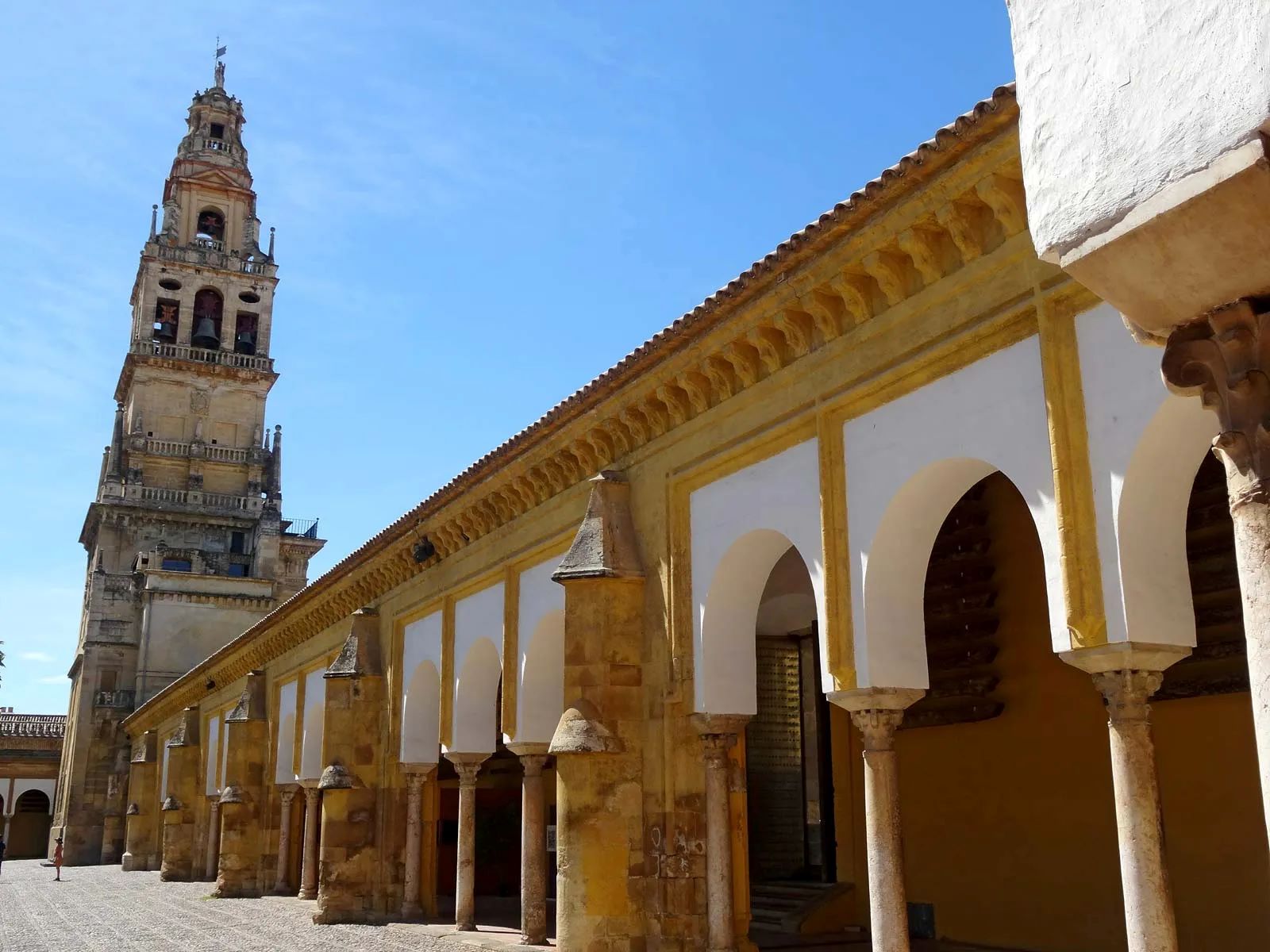
The Grand Mosque of Cordoba, also known as the Mezquita, is an architectural masterpiece that holds a significant place in Islamic art and Spanish history. With its breathtaking beauty and rich cultural heritage, this iconic landmark attracts millions of visitors from around the world every year. Built during the 8th century, the Grand Mosque of Cordoba has undergone multiple changes and expansions, resulting in a unique fusion of Islamic and Christian influences. From its stunning horseshoe arches to its mesmerizing geometric patterns, this grand structure is a testament to the splendor of the Arab-Andalusian civilization. In this article, we will explore 16 extraordinary facts about the Grand Mosque of Cordoba, shedding light on its historical significance and architectural marvels.
Key Takeaways:
- The Grand Mosque of Cordoba is a stunning blend of Islamic and Christian architecture, showcasing over 850 columns and a breathtaking prayer hall, making it a must-visit for history and art enthusiasts.
- This UNESCO World Heritage Site symbolizes religious tolerance and unity, welcoming millions of visitors annually to experience its rich history, cultural events, and breathtaking views from the Tower of Abd al-Rahman III.
The Grand Mosque of Cordoba is a UNESCO World Heritage Site.
The Grand Mosque of Cordoba, also known as the Mezquita-Catedral, is a remarkable architectural marvel situated in the Andalusian city of Cordoba, Spain. It was designated as a UNESCO World Heritage Site in 1984 due to its historical and cultural significance.
It was originally a small Visigothic church.
Many are surprised to learn that the Grand Mosque of Cordoba has humble origins as a Visigothic Christian church named San Vicente. However, with the Muslim conquest of Cordoba in 711, it was seized and later transformed into the grand mosque we see today.
The mosque underwent several expansions.
Over the centuries, the mosque went through numerous expansions, resulting in an awe-inspiring structure. Its distinctive horseshoe arches, intricate geometric patterns, and beautiful columns are a testament to the architectural brilliance of the Moorish era.
There are over 850 columns in the mosque.
One of the most striking features of the Grand Mosque of Cordoba is its mesmerizing colonnade. It consists of over 850 columns, made from jasper, marble, onyx, and granite, supporting the iconic red and white double arches.
The mosque has an impressive prayer hall.
Spanning 24,000 square feet, the prayer hall, or “haram,” is a sight to behold. It can accommodate thousands of worshippers and is adorned with sparkling gold, colorful mosaics, and ornate carvings, creating a truly enchanting ambiance.
A cathedral was built within the mosque during the Reconquista.
In the 13th century, following the Reconquista, the Christian rulers constructed a cathedral in the heart of the mosque. The fusion of Islamic and Christian architecture resulted in a unique blend of styles that adds to the mosque’s allure.
The mosque-cathedral reflects a mix of architectural influences.
The Grand Mosque of Cordoba showcases a fusion of architectural styles, including Islamic, Renaissance, and Baroque. The expansion of the cathedral brought elements like the high altar, chapels, and the choir, giving the monument its diverse character.
The mihrab is a masterpiece of Islamic art.
The mihrab, an intricately decorated niche indicating the direction of Mecca, is a highlight of the Grand Mosque. Crafted with exquisite detail using vibrant tiles, gold leaf, and carved stucco, the mihrab exemplifies the craftsmanship of Islamic art.
It boasts an impressive courtyard.
The mosque’s serene courtyard, known as the “Court of Oranges,” is a tranquil oasis filled with fragrant orange trees and beautifully manicured gardens. It offers visitors a peaceful respite amidst the architectural grandeur.
The mosque was converted into a cathedral in the 16th century.
After the Reconquista, in the 16th century, the mosque was consecrated as a Christian cathedral. However, the Muslim influence is still evident, making it a unique blend of two religious traditions.
The Tower of Abd al-Rahman III provides stunning views.
Rising 93 meters above the city, the Tower of Abd al-Rahman III offers panoramic views of Cordoba’s historic old town. Climbing to its top rewards visitors with breathtaking vistas of the surrounding landscape.
Visitors can explore the mosque-cathedral’s treasure museum.
The Grand Mosque of Cordoba houses an intriguing treasure museum where visitors can delve into its rich history. It displays an impressive collection of religious artifacts, including ancient manuscripts, jewelry, and Islamic art.
The mosque-cathedral hosts cultural events and concerts.
Today, the Grand Mosque of Cordoba serves not just as a religious site but also as a cultural hub. It frequently hosts concerts and events, attracting visitors from around the world to experience the intersection of history and art.
It welcomes millions of tourists every year.
As one of Spain’s top tourist attractions, the Grand Mosque of Cordoba draws millions of visitors annually. Its architectural grandeur, historical significance, and religious importance make it a must-visit destination for travelers.
The mosque-cathedral is a symbol of religious tolerance.
The Grand Mosque of Cordoba stands as a testament to the coexistence of different faiths and cultures throughout history. It serves as a symbol of religious tolerance, reminding us of the importance of embracing diversity and unity.
The Grand Mosque of Cordoba inspires awe and admiration.
Undoubtedly, the Grand Mosque of Cordoba, with its rich history, awe-inspiring architecture, and spiritual significance, leaves visitors in absolute awe. It is a true monument to human creativity and ingenuity, deserving of its place among the world’s most extraordinary landmarks.
Conclusion
The Grand Mosque of Cordoba is truly a remarkable architectural masterpiece. Its history, design, and significance make it a must-visit destination for anyone interested in the rich cultural heritage of Spain. From its origins as a Visigothic church to its transformation into a mosque during the Islamic rule, and eventual conversion into a Catholic cathedral, this architectural marvel reflects the diverse cultural influences that have shaped the region over the centuries. The stunning hypostyle hall, intricate horseshoe arches, and mesmerizing Mihrab are testaments to the skill and craftsmanship of the artisans who built it. The Grand Mosque of Cordoba stands as a symbol of harmony, coexistence, and the shared cultural heritage of humanity.
FAQs
1. What is the significance of the Grand Mosque of Cordoba?
The Grand Mosque of Cordoba holds immense historical and architectural significance. It is a testament to the religious and cultural coexistence in Spain during the Islamic rule and represents the diverse heritage of the region.
2. Can visitors explore the entire Grand Mosque of Cordoba?
Yes, visitors can explore the entire Grand Mosque of Cordoba, including the stunning prayer hall, courtyard, and the awe-inspiring Mihrab. However, certain areas may be restricted during religious ceremonies or maintenance work.
3. Can non-Muslims visit the Grand Mosque of Cordoba?
Yes, non-Muslims are welcome to visit the Grand Mosque of Cordoba. It is a popular tourist attraction and welcomes visitors of all backgrounds to admire its architectural beauty and learn about its history.
4. Are there any dress code requirements for visiting the Grand Mosque of Cordoba?
Yes, visitors are required to dress modestly when visiting the Grand Mosque of Cordoba. Both men and women should cover their shoulders and knees as a sign of respect.
5. Can visitors take photographs inside the Grand Mosque of Cordoba?
Yes, visitors are generally allowed to take photographs inside the Grand Mosque of Cordoba. However, usage of flash may be prohibited in certain areas to preserve the delicate artwork.
6. Is the Grand Mosque of Cordoba accessible for individuals with disabilities?
Efforts have been made to ensure accessibility for individuals with disabilities within the Grand Mosque of Cordoba. There are ramps and elevators available to facilitate mobility.
7. Is there an entrance fee to visit the Grand Mosque of Cordoba?
Yes, there is an entrance fee to visit the Grand Mosque of Cordoba. The fee includes access to both the mosque and the surrounding areas, including the famous Patio de los Naranjos (Courtyard of the Orange Trees).
8. Are there guided tours available at the Grand Mosque of Cordoba?
Yes, guided tours are available at the Grand Mosque of Cordoba. It is recommended to join a guided tour to fully appreciate the historical and architectural significance of this remarkable landmark.
Discover more architectural wonders and historic monuments that showcase the rich cultural heritage of various civilizations. From the stunning Islamic architecture of Kul Sharif Mosque to the UNESCO World Heritage Site of Fatehpur Sikri, each destination holds its own unique charm. Don't miss out on exploring the ancient Maa Chintpurni Temple, which offers a glimpse into the fascinating history of India. Embark on a journey through time as you uncover the extraordinary facts and stories behind these remarkable landmarks.
Was this page helpful?
Our commitment to delivering trustworthy and engaging content is at the heart of what we do. Each fact on our site is contributed by real users like you, bringing a wealth of diverse insights and information. To ensure the highest standards of accuracy and reliability, our dedicated editors meticulously review each submission. This process guarantees that the facts we share are not only fascinating but also credible. Trust in our commitment to quality and authenticity as you explore and learn with us.


